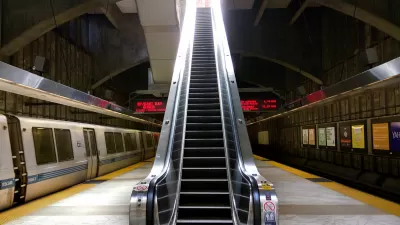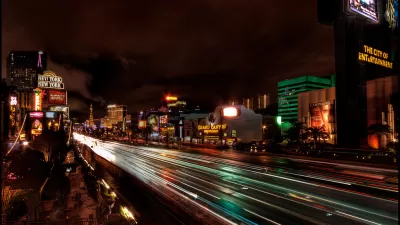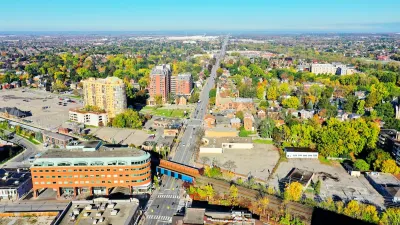The Regional Transportation Commission is looking for ways to reverse ridership figures that have plummeted since the advent of transportation network companies.

"As the use of ride-hailing increases around the Las Vegas Valley, especially along the Strip, bus use in the area continues to fall," reports Mick Akers.
The Regional Transportation Commission used to generate its most revenue in fares from bus routes running along the Las Vegas Strip—not so much anymore. "Bus revenue on the Strip fell 18 percent between October 2015 and December 2018," according to RTC data shared by Akers. According to a source quoted in the article, the RTC used to make $6 million in profit operating buses on what it calls the resort corridor.
Faced with the economic realities of a post ride-hailing world, the RTC is looking to reinvent itself. Included among the plans are a new on-demand micromobility shuttle pilot project.
For more context on transportation planning in Las Vegas, here is a list of previous coverage on the subject from the Planetizen archives.
- New Traffic Management Tech Coming to Downtown Las Vegas (December 2018)
- In Las Vegas, Ridesharing and Transit Complement and Compete (October 2018)
- Brightline, Florida's High-Speed Rail Company, Goes All in on Vegas (September 2018)
- A New Fleet of AVs Operating in Las Vegas (May 2018)
- Elevated Expressway Proposal Goes Bust in Las Vegas(December 2017)
- Las Vegas Light Rail Plans Take a Big Step Forward (March 2017)
- RTC Bike Share Shows Las Vegas' Bike-Friendly Side (October 2016)
- Vanishing Act for Free Parking on the Las Vegas Strip (January 2016)
-
Could the Las Vegas Strip Go Multi-Modal?(August 2014)
FULL STORY: Dwindling Las Vegas Strip bus ridership concerns officials

Trump Administration Could Effectively End Housing Voucher Program
Federal officials are eyeing major cuts to the Section 8 program that helps millions of low-income households pay rent.

Planetizen Federal Action Tracker
A weekly monitor of how Trump’s orders and actions are impacting planners and planning in America.

Ken Jennings Launches Transit Web Series
The Jeopardy champ wants you to ride public transit.

Washington Legislature Passes Rent Increase Cap
A bill that caps rent increases at 7 percent plus inflation is headed to the governor’s desk.

From Planning to Action: How LA County Is Rethinking Climate Resilience
Chief Sustainability Officer Rita Kampalath outlines the County’s shift from planning to implementation in its climate resilience efforts, emphasizing cross-departmental coordination, updated recovery strategies, and the need for flexible funding.

New Mexico Aging Department Commits to Helping Seniors Age ‘In Place’ and ‘Autonomously’ in New Draft Plan
As New Mexico’s population of seniors continues to grow, the state’s aging department is proposing expanded initiatives to help seniors maintain their autonomy while also supporting family caregivers.
Urban Design for Planners 1: Software Tools
This six-course series explores essential urban design concepts using open source software and equips planners with the tools they need to participate fully in the urban design process.
Planning for Universal Design
Learn the tools for implementing Universal Design in planning regulations.
Heyer Gruel & Associates PA
Ada County Highway District
Institute for Housing and Urban Development Studies (IHS)
City of Grandview
Harvard GSD Executive Education
Toledo-Lucas County Plan Commissions
Salt Lake City
NYU Wagner Graduate School of Public Service





























